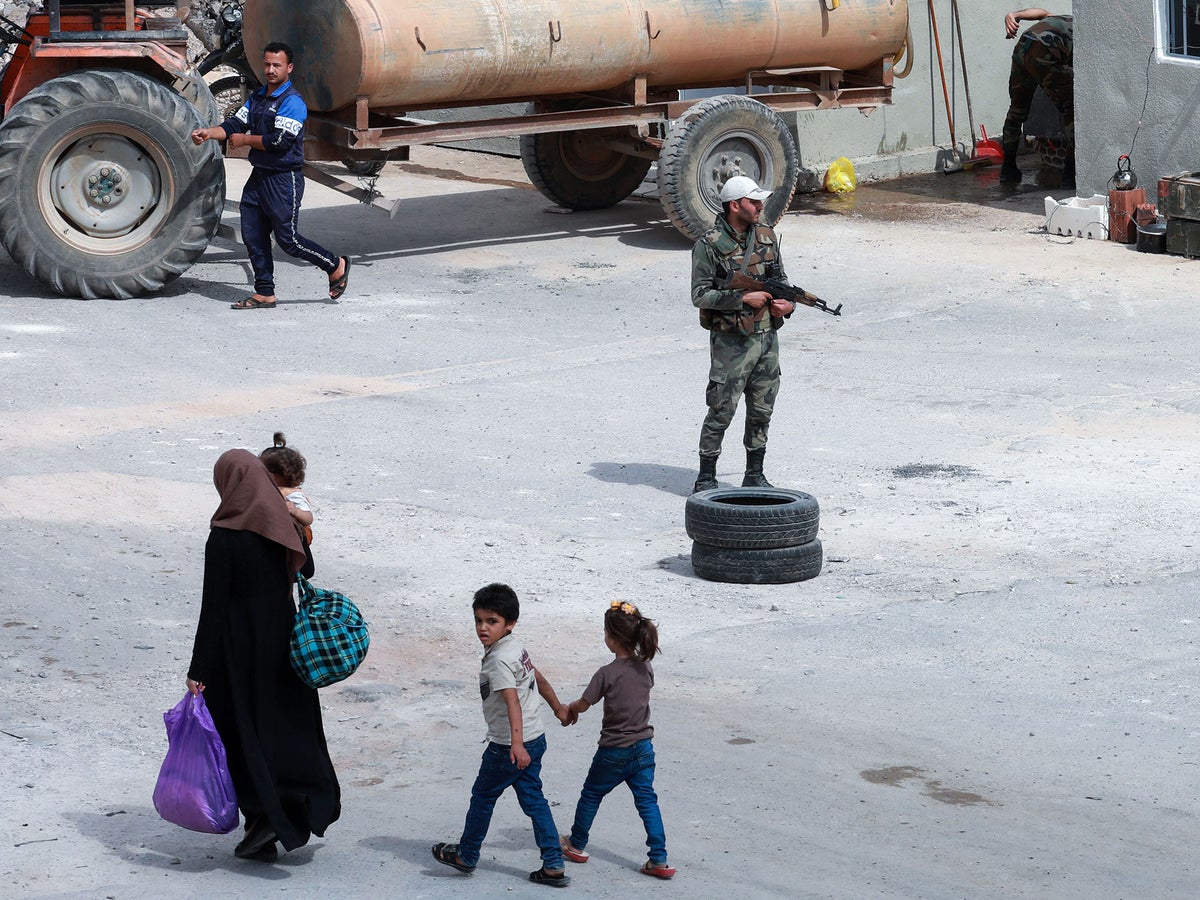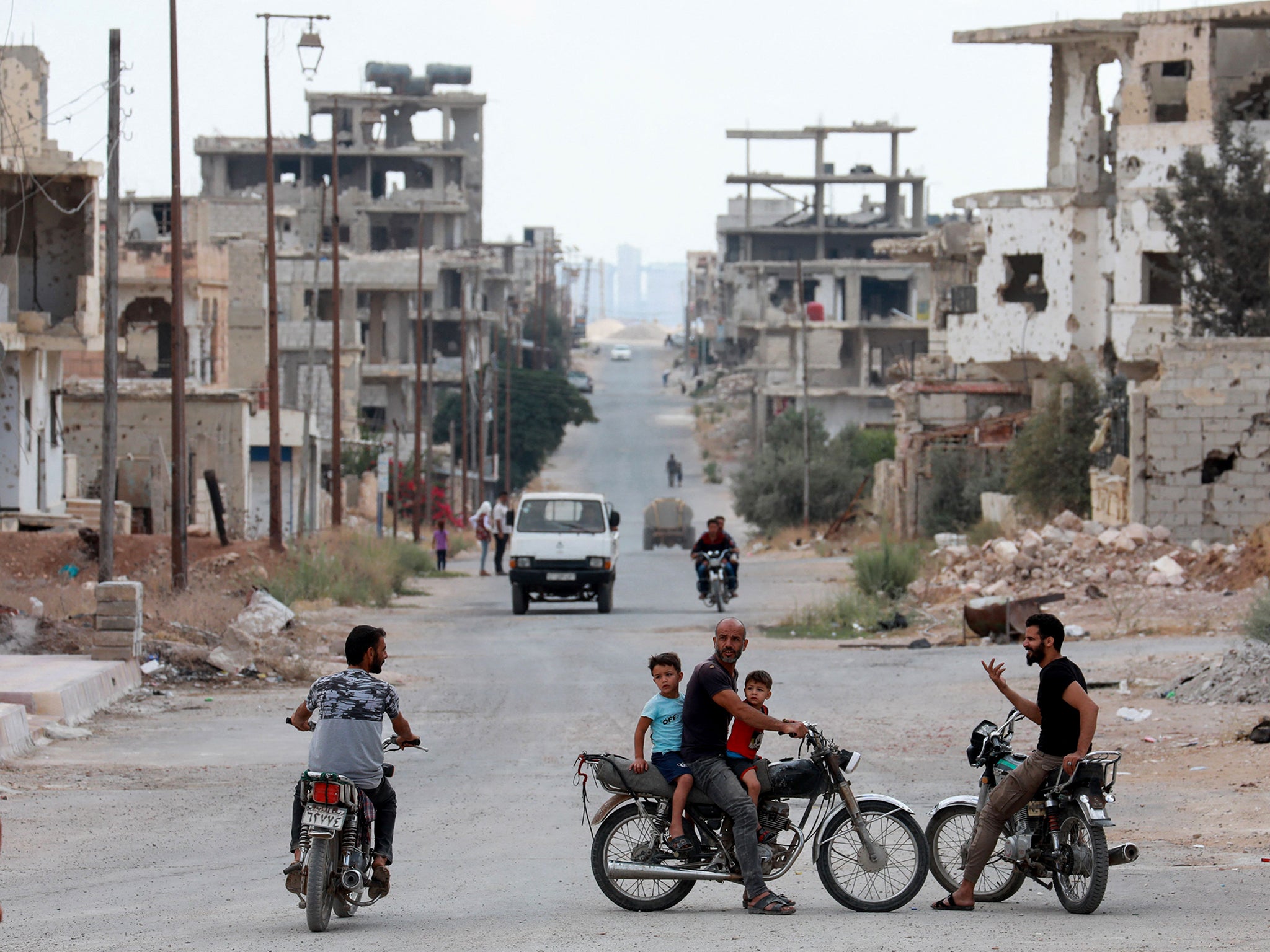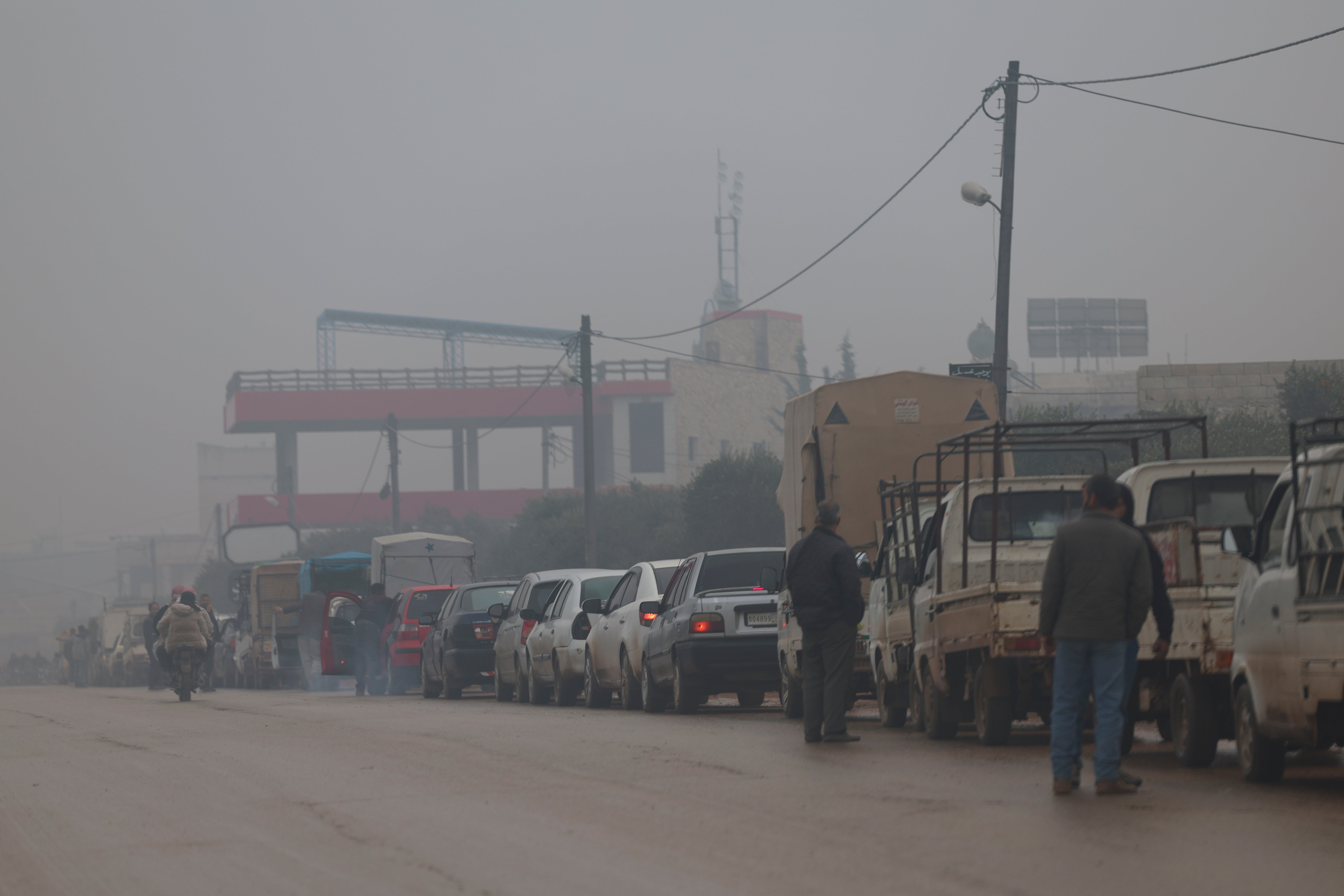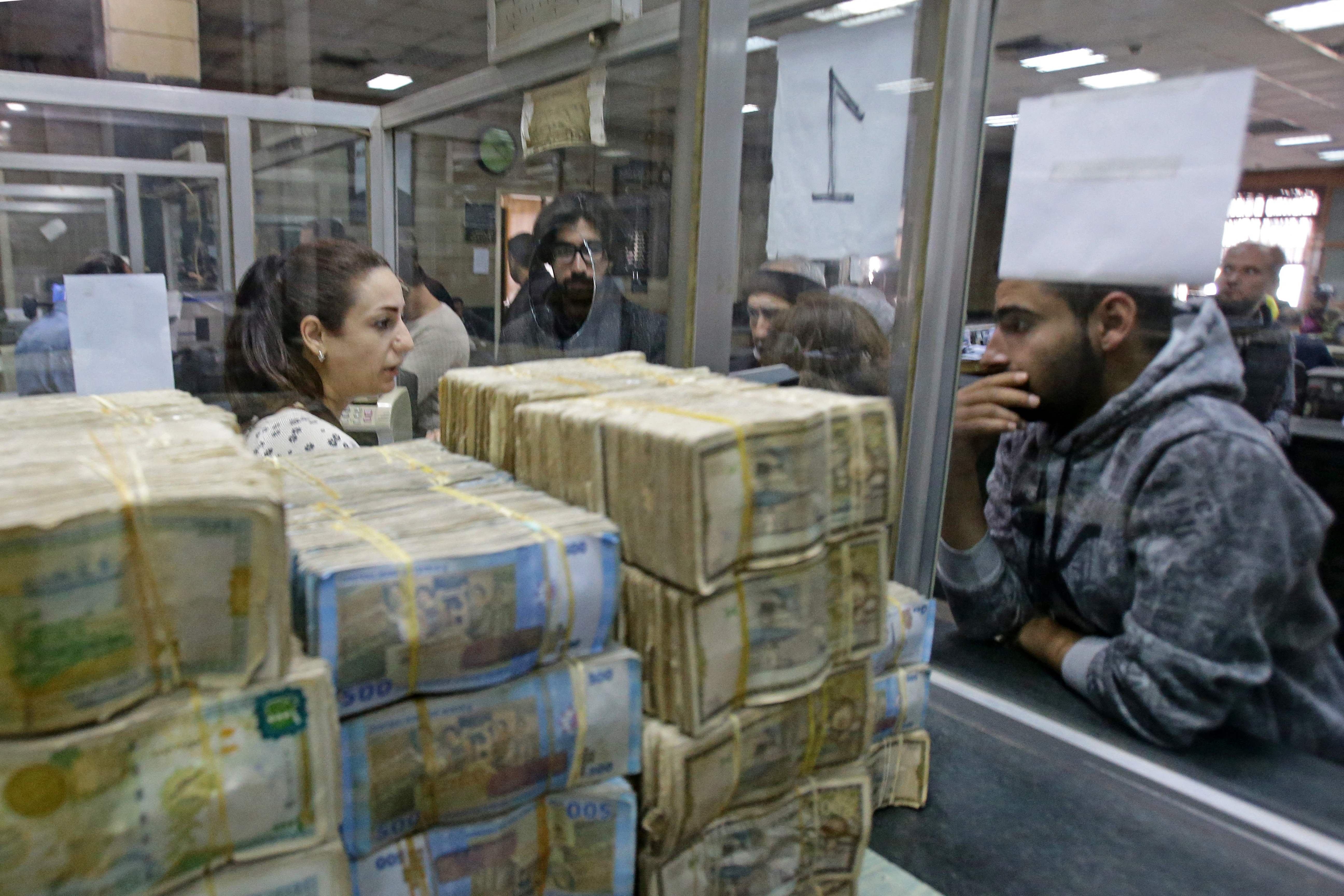
Gangsterism, political repression and violence are unravelling a shaky peace in southern Syria, where a Russian-brokered settlement was supposed to end conflict between forces loyal to dictator Bashar al-Assad and the armed rebels who sought to topple him.
On the streets of cities and towns in Daraa province are reminders of the moment Syria’s uprising first began in March 2011. Assad’s opponents have risen again in recent days, staging protests, singing revolutionary songs, and waving the pre-Baath Party flag of Syria.
“Oh Daraa, we are with you until death, even if that means to die with you,” protesters sang in the Daraa province town of Jassim this month. “The people want the downfall of the regime,” they chanted, repeating the primary slogan of the 2011 Arab spring uprising.
In a video of the event, gunmen appear on rooftops taking aim at the protesters, including children. “The regime is shooting at the people,” a narrator says.
At least half a million people have been killed during Syria’s 12-year conflict, many of them civilians crushed by barrel bombs or tortured to death in prison facilities. Supported by Iran and Russia, Assad began retaking areas controlled by rebels years ago, often imposing Russian- or United Nations-backed reconciliation deals in which rebels would relocate or disarm in exchange for amnesty.
The apparent unravelling of these deals could have broader implications.
Nearby Israel and Jordan have nervously watched the increasing presence on their borders of Iranian-backed militias, narco-traffickers and jihadi extremists in areas officially controlled by the Damascus regime. Many Syrians are opting to flee to other parts of the Middle East or to Europe.
The chaos in the south could also weaken security in the north of Syria. The Kremlin brought the defence ministers of Syria and Turkey together in Moscow last week, in a possible bid to convince Ankara to allow Russia to impose an arrangement similar to that in place in the south in areas under Kurdish and rebel control in the north.
“Ways of resolving the Syrian crisis and the problem of refugees, as well as joint efforts to combat extremist groups in Syria, have been discussed,” Russia’s official RIA news agency said.
Experts say the Daraa model is looking increasingly unattractive.
“The Assad regime is losing control in Daraa,” says Mete Sohtaoglu, a specialist on the Middle East at Bilgesam, an Istanbul-based advisory firm. “The security chaos has been increasing in southern Syria ever since the regime took control. Many conflicting parties are struggling against each other to show their presence on the ground and to hinder the plans of others. That keeps the region in chaos.”
Southern Syria has remained in a state of heightened tension and mistrust since the Kremlin brokered a deal between rebel fighters and the Assad regime in 2018. Along with former rebels, the volatile mix of players includes Isis remnants roaming the hinterlands as well as regime-connected drug smugglers moving Captagon, methamphetamine and other narcotics across the Jordanian frontier towards the Persian Gulf and the Arabian peninsula.
Observers suspect that Iran and its allies are also involved in stirring unrest in the strategic region that abuts the Golan Heights, occupied by Tehran’s nemesis Israel.

But the most nefarious predators remain the regime-connected armed forces and militias, who sometimes operate out of a base that was once controlled by Russia and is now in the hands of Iran and Hezbollah. Assad’s brother, Maher al-Assad, has been described as a ringleader of both the Iranian-backed militias and the trafficking networks, which has helped to bankroll the regime at a time when it remains under heavy international sanctions.
“Syria has effectively become a narco-state,” says Sohtaoglu.
Regime forces are carrying out increasingly lawless activities, including kidnappings for ransom and the forced abduction of suspected opponents. But they recently triggered large protests by arresting the sister-in-law of a former rebel leader who remained in detention.
“Daraa was in security risks on a daily basis – anything can trigger large-scale protests,” says Navvar Saban, a researcher at the Omran Centre for Strategic Studies, a Syria-focused think tank. “What happened this time is that [they arrested] the relative of an ex-FSA fighter. That was a major red line.”
One protester told Syrian newspaper Enab al-Baladi that he and others had joined in the marches in towns across the south to signal that the “revolutionary spirit” that prompted the 2011 uprising remains alive. He said the people in his town of Tal Shihab had marched right up to the headquarters of the security forces, holding up the provocative independence flag of pre-Assad Syria.

Regular protests against the regime and its forces began on 21 December and have continued intermittently in at least a half a dozen cities and towns, according to the Syrian Observatory for Human Rights, a UK-based monitoring group.
In recent days there have been sporadic reports of violence, including security forces opening fire on crowds of protesters. But there have also been assassinations of at least eight security officials loyal to Assad, according to accounts from the few active Syrian journalists discreetly operating in the country.
Syrians in the southern provinces of Daraa and Swaida complain that they are preyed upon by regime forces and Iranian-backed militias as well as by Isis remnants. Some former rebels who rejected the July 2018 Russian-brokered reconciliation scheme have also moved closer to Isis and are intent on settling scores.

Repeatedly, former rebel factions find themselves alone in fending off Isis. In mid-October, former rebels killed former Isis chief Abu al-Hasan al-Hashimi al-Qurashi, whose forces had been targeting rebel fighters in assassination campaigns. On 25 December, rebels in the south reportedly killed yet another local Isis commander with the nom de guerre Abu Louay al-Qalamuni.
Isis has launched suicide bombings targeting both the rebels and the regime, and even set up an Islamic court in the city of Jassim before it was discovered and shut down.
“Isis fighters are roaming these areas,” says Sohtaoglu. “Assassinations and murders are taking place. The areas under nominal regime control in southern Syria are clearly seen as unsafe. There are kidnappings, robberies, murders, and bombings.”

The chaos, which has exacerbated an economic collapse and an apparent resurgence of Covid, adds to the hardships of ordinary citizens, and could potentially prompt more protests. Adding to the woes is a Damascus regime that sees violence and suppression as the sole way to address discontent.
When protesters last month took to the streets of Swaida to voice anger at power cuts and price rises, regime forces opened fire.
“Any kind of security problem in Daraa is another excuse to use more force, to arrest more people,” says Saban. “Is it really bothering the regime? I don’t think so.”







